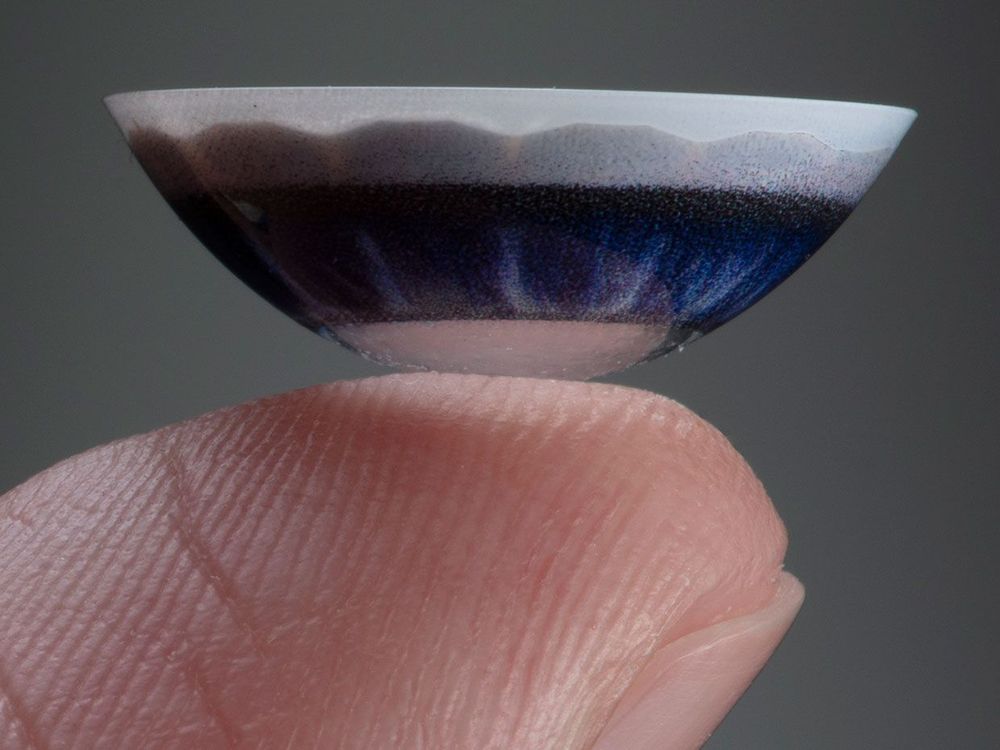Look no further. Now you can experience AR without a headset.


Look no further. Now you can experience AR without a headset.

#Technology in #medicine: What will the #future #healthcare be like? https://www.neurozo-innovation.com/post/future-health Technologies have made many great impacts on our medical system in recent years. The article will first give a thorough summarization of them, and then the expectations and potential problems regarding future healthcare will be discussed. #AI #5G #VR #AR #MR #3DPrinting #BrainComputerInterface #telemedicine #nanotechnology #drones #SelfDriving #blockchain #robotics #innovation #trend
Technology has many beneficial effects on modern people’s lives, and one of them is to prolong our lifespan through advancing the medical field. In the past few years, new techniques such as artificial intelligence, robots, wearable tech, and so on have been used to improve the quality of our healthcare system, and some even newer innovations such as flying vehicles and brain computer interface are also considered valuable to the field. In this article, we will first give a thorough discussion about how these new technologies will shape our future healthcare, and then some upcoming problems that we may soon face will be addressed.

Helsinki-based neurotech startup NextMind unveiled a compact brain-sensing wearable device that delivers real-time device control using just a person’s thoughts. It captures data from the electrical signals created by the user’s neural activity in the visual cortex, and using machine learning algorithms, transforms that output into a signal that can control a computer, AR/VR headset or any device on the Internet of Things.
The lightweight device fits into the back of a cap or headband, and rests gently on the user’s head. NextMind offers a totally new way of interacting with VR and AR environments. It is designed for ‘wear and play’ with no training required making it ideal for gaming. Users have their brain directly connected to the digital world, bypassing their physical body and creating a fully immersive experience.
Company founder and CEO Sid Kouider unveiled the groundbreaking noninvasive brain-computer interface at Slush 2019 in Helsinki yesterday.

Evolutionary cyberneticist and digital philosopher Alex M. Vikoulov, author of The Syntellect Hypothesis, is interviewed by Agah Bahari, host and producer of NeoHuman podcast.
On this recent podcast, Alex Vikoulov, author of The Syntellect Hypothesis, is interviewed by NeoHuman podcaster Agah Bahari. Topics include evolutionary cybernetics, computational physics, consciousness, the simulation theory, the transcension hypothesis, the Global mind, AGI, VR, AR, psychedelics, technological singularities, transhumanism, Fermi Paradox, Digital Physics, objective reality, philosophy of mind, the extended mind hypothesis, absolute idealism, physics of time, the Omega Point cosmology, mind-uploading, synthetic telepathy, and more.
Watch a short intro here ↴.

A startup focused on “invisible computing” Thursday unveiled a smart contact lens which delivers an augmented reality display in a user’s field of vision.
The Mojo Vision contact lens offers a display with information and notifications, and allows the user to interact by focusing on certain points.
The rigid contact lens, which the company has been developing in stealth mode for some 10 years, may also be used to help people with visual impairments by using enhanced image overlays, and has obtained US approval for testing it as a medical device.

Science fiction writers envisioned the technology decades ago, and startups have been working on developing an actual product for at least 10 years.
Today, Mojo Vision announced that it has done just that—put 14K pixels-per-inch microdisplays, wireless radios, image sensors, and motion sensors into contact lenses that fit comfortably in the eyes. The first generation of Mojo Lenses are being powered wirelessly, though future generations will have batteries on board. A small external pack, besides providing power, handles sensor data and sends information to the display. The company is calling the technology Invisible Computing, and company representatives say it will get people’s eyes off their phones and back onto the world around them.
The first application, says Steve Sinclair, senior vice president of product and marketing, will likely be for people with low vision—providing real-time edge detection and dropping crisp lines around objects. In a demonstration last week at CES 2020, I used a working prototype (albeit by squinting through the lens rather than putting it into my eyes), and the device highlighted shapes in bright green as I looked around a dimly lit room.


While these “moonshots” are still some years away, there are viable applications of 5G in the near term. South Korea launched the world’s first commercial 5G network in April and has seen data transfer rates rise from 50 megabits per second to over 700 Mbps. This enables the delivery of augmented reality, virtual reality and AI-enhanced real-time sports content.
With the arrival of next-generation mobile networks, new services like remote surgery will be suddenly feasible. More immediately, expect a boom in video traffic and augmented reality content.

Take the Developer Economics Survey and win prizes!
The Developer Economics survey is run by independent analyst firm /Data, reaching over 40,000+ developers in 167 countries annually. It is for Software developers: professionals, hobbyists & students, working across all major areas: mobile, web, desktop, cloud, IoT, AR/VR, games, ML & data science.

Park Las Vegas, sponsored by Bleutech Park Properties, Inc. is breaking ground in the Las Vegas Valley in December 2019 as the first city in the world to boast a digital revolution in motion, redefining the infrastructure industry sector. This $7.5 billion, six year project, will be constructed of net-zero buildings within their own insular mini-city, featuring automated multi-functional designs, renewable energies from solar/wind/water/kinetic, autonomous vehicles, artificial intelligence (AI), augmented reality, Internet of Things (IoT), robotics, supertrees, and self-healing concrete structures.
Bleutech Park’s mixed-use environment featuring workforce housing, offices, retail space, ultra-luxury residential, hotel and entertainment will introduce a new high-tech biome to the desert valley.